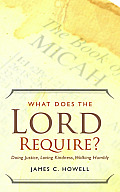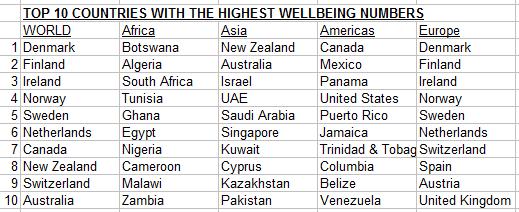TITLE:
Nearing Home - Life, Faith, and Finishing Well
AUTHOR: Billy Graham
PUBLISHER: Nashville, TN: Thomas-Nelson, 2011, (182 pages).
Astounding! At 93, this man of God continues to exercise his influence through his golden years. In his latest addition to his huge collection of writings and teachings, '
Nearing Home' is perhaps his most personal and retrospective work so far. Written with an eye on God's heavenly kingdom, he dishes out many nuggets of wisdom. While many past their prime years attempt to shun away from even thinking about death and dying, Graham adopts the attitude of 'running toward home.' He reflects on his life and is able to encourage us to age gracefully simply because there is a much brighter future for believers in Christ.
Graham's grasp of biblical texts is masterful. He zooms in on lesser known characters of the Bible, like Barzillai, as an example for being faithful despite being old. He traces the lives of Noah (more than 500 years old), Enoch (365 years) and Methuselah (969 years), and the way they walk with God through their old age. His point is that God still uses people even in their aging years. As he reflects on his failing eyesight, he ponders:
"I often wonder if God, in His sovereignty, allows the eyesight of the aged to cast a dim view of the here and now so that we may focus our spiritual eyes on the ever after." (15)
A Treasure Chest of Wisdom
There are pages after pages of collected wisdom over the years. Wisdom such as
understanding. He is especially able to identify with the struggles of people in this age group.
"Loneliness, loss of purpose, depression, feelings of worthlessness, anxiety, fear of the future - these and a host of other emotions are common among retirees. Sadly, some find themselves unable to cope with their new situations, and a surprisingly large number of retirees succumb to illness only a year or so after they retire." (30)
One example is about a retiree whose death certificate says he died from a stroke. While medically that was correct, the truth is that the deceased died due to a broken heart.
Wisdom also of
cultural awareness. He recalls some of the cultural expectations of retirement and exhorts us never to retire from life, making a difference between retiring from work vs retiring from life. Instead, he offers this wise counsel all of us, especially the older generation.
"As the older generation we should be mindful of our responsibility to pray for others. Retirement should not put us on the shelf. We should use this time in our lives to rest from our labors but lift up others who are carrying heavy loads." (28)
Wisdom of
hope and
thankfulness. If we approach life with a thankful heart, that will make all the difference. Each chapter is filled with reasons why as one nears the end of life, there are more reasons to hope and be excited about. He encourages those who are retired that there are ample opportunities to pray, to volunteer, and to share wisdom.
Wisdom to
plan. It is also never too late to plan for retirement. Here he makes a distinction between investing our lives to please people and investing our lives to please God. The former may mean 'continued fellowship' with our friends and loved ones. The latter means honouring God first.
Wisdom also of rightly placing our
trust in heavenly things. He does not limit himself only to making positive exhortations. He warns us about erroneous thinking. He makes a case for all to put money in its right place.
"Our society places too much emphasis on money, implying that financial achievement is the main measure of a person's true success in life." (59)
He argues against putting too much hope in a 'retirement dream.' For example, many who have set aside their nest egg, investing in a vacation bungalow and a life of doing nothing on a secluded beach, after a few weeks, when the novelty wears off, one may start getting depressed. He also provides practical tips surrounding writing a will, avoiding unnecessary expenditures, legal matters, and other practical stuff. He is keenly aware of health issues. As always, he ends his exhortations with a clear reference to the Bible, and a call for trust and obedience to God.
Wisdom also of being aware of the
perils of aging. Despite his failing strength physically, his spiritual vitality remains strong.
- Fear of uncertainty
- Depression
- Anger
- Intense Loneliness
- Self-Absorption
Perhaps, the greatest wisdom he imparts to us is the constant focus on Christ that enables one to finish strong. The author has many insights on contemporary culture too. For instance, he observes that our culture is fascinated by things that are latest and greatest, which by themselves can be very deceitful. He writes:
"Youth, however, are accustomed to discarding one possession for another that might look the same but possess something unseen: more memory. In a world already drowning in the information flood, tech companies are constantly increasing memory capacity, and users are thrilled at forgetting the old to make room for the new. Meanwhile the older generation is hanging on for dear life to the memories we have accumulated during our lifetimes, fearful we might forget the anchors that stabilized, the lighthouse that directed, and the Word of God that calmed the treacherous waters." (144)
When one is rooted in Christ, one will learn to look back with thanksgiving and look forward to the heavenly kingdom.
Closing Thoughts
I am amazed by this man's spiritual strength and mental fortitude. It takes a strong inner man to overpower a frail outer body. Page after page, I see a man who is reflective about his own life and instructive about the way the world is going. He shares his wisdom with stories that are not just practical but impact-ful. Never shy to share the word, even in his twilight years, Graham continues to shine a beam on Scripture. It has been said that the words of a dying man contains a concise summary of his life and his learning. For Graham, even as he nears home, he will be remembered for his brilliant and exemplary life, an encouraging faith, and an energy to finish well. Personally, it will be difficult for this book to be dislodged from being ranked #1 in my Top 10 books for 2011.
Buy this book for your aged friends. Recommend this book for the fellowship. If anyone wants to plan for retirement, this book is certainly a great way to begin.
Ratings: 5 stars of 5.
conrade
"Book has been provided courtesy of Thomas Nelson and Graf-Martin Communications, Inc. Available at your favourite bookseller from Thomas Nelson".















